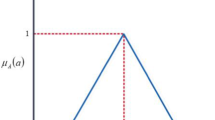Abstract
Purpose
This paper develops a vibro-acoustic component modal synthesis method to solve the problem of high computation time in solving the eigenvalues and eigenvectors of coupled equations for noise reduction topology optimization.
Methods
The normalization condition of the left and right eigenvectors of the unsymmetrical vibro-acoustic equation is introduced, and Craig–Bampton method is extended to the structure-acoustic coupled problem, which reduces the time consumed by the response calculation part. The results show that the eigenvalues, the eigenvectors, and the response values calculated by the proposed method match well with the original model. To solve the problem of spurious eigenmodes caused by the traditional penalization model used in the classical bi-directional evolutionary optimization (BESO) method, the linear stiffness penalization model is introduced into the BESO method, and an improved penalization model is proposed.
Conclusions
Numerical examples of minimizing the response at a specified target point are studied. The results show that the iterative process is robust. Through these numerical design examples, the effectiveness and reliability of the model reduction method and the improved penalization model are verified.
















Similar content being viewed by others
References
Christiansen RE, Fernandez-Grande E (2016) Design of passive directional acoustic devices using topology optimization-from method to experimental validation. J Acoust Soc Am 140(5):3862–3873
Liu Y, Du H, Li HG, Li FC, Sun W (2019) An improved method for parametric model order reduction by matrix interpolation. J Vib Eng Technol 7:603–661
Koh HS, Kim JH, Yoon GH (2020) Efficient topology optimization of multicomponent structure using substructuring-based model order reduction method. Comput Struct 228:1–16
Mapa L, das Neves F, Guimarães GP (2020) Dynamic substructuring by the Craig-Bampton method applied to frames. J Vib Eng Technol
Zhao S, Chen Q, Yao B (2018) Damped vibration absorbers for multi-mode longitudinal vibration control of a hollow shaft. J Vib Eng Technol 6:1–12
Unruh JF (1980) Finite element subvolume technique for structural-borne interior noise prediction. J Aircraft 17(6):434–441
Cottle RW (1974) Manifestations of the Schur complement. Linear Algebra Appl 8(3):189–211
Kim SM, Kim JG, Chae SW, Park KC (2019) A strongly coupled model reduction of vibro-acoustic interaction. Comput Method Appl M 347(15):495–516
Davidsson P, Sandberg G (2006) A reduction method for structure-acoustic and poroelastic-acoustic problems using interface-dependent lanczos vectors. Comput Method Appl M 195(17/18):1933–1945
Tran QH, Ouisse M, Bouhaddi N (2010) A robust component mode synthesis method for stochastic damped vibroacoustics. Mech Syst Signal Pr 24(1):164–181
Herrmann J, Maess M, Gaul L (2010) Substructuring including interface reduction for the efficient vibro-acoustic simulation of fluid-filled piping systems. Mech Syst Signal Pr 24(1):153–163
Chiello O, Sgard FC, Atalla N (2003) On the use of a component mode synthesis technique to investigate the effects of elastic boundary conditions on the transmission loss of baffled plates. Comput Struct 81(28/29):2645–2658
Maria AAN, Marcus AVD (2013) Component mode synthesis method applied to two-dimensional acoustic analysis in ducts. J Vib Acoust 135(1):1–45
Hambric SA, Sung SH, Nefske DJ (2016) Structural-acoustic modal analysis and synthesis. Wiley, USA
El Maani R, El Hami A, Radi B (2018) Substructure/fluid subdomain coupling method for large vibroacoustic problems. Struct Eng Mech 65(4):359–368
Sahoo PR, Barik M (2020) Free vibration analysis of stiffened plates. J Vib Eng Technol
Huang X, Xie YM (2009) Bi-directional evolutionary topology optimization of continuum structures with one or multiple materials. Comput Mech 43(3):393–401
Pedersen NL (2000) Maximization of eigenvalues using topology optimization. Struct Multidiscip Optim 20(1):2–11
Huang X, Xie YM (2007) Convergent and mesh-independent solutions for the bi-directional evolutionary structural optimization method. Finite Elem Anal Des 43(14):1039–1049
Kim TS, Kim YY (2000) Mac-based mode-tracking in structural topology optimization. Comput Struct 74(3):375–383
Acknowledgements
This study is supported by the Chinese National Natural Science Fund (No. 11602300).
Author information
Authors and Affiliations
Corresponding author
Ethics declarations
Conflict of interest
The authors declare that there is no conflict of interests regarding the publication of this article.
Additional information
Publisher's Note
Springer Nature remains neutral with regard to jurisdictional claims in published maps and institutional affiliations.
Rights and permissions
About this article
Cite this article
Wang, X., Liu, B. & Wang, D. Topology Optimization for Acoustic–Structure Interaction Systems Using the Model Reduction Method. J. Vib. Eng. Technol. 9, 341–353 (2021). https://doi.org/10.1007/s42417-020-00230-5
Received:
Revised:
Accepted:
Published:
Issue Date:
DOI: https://doi.org/10.1007/s42417-020-00230-5




